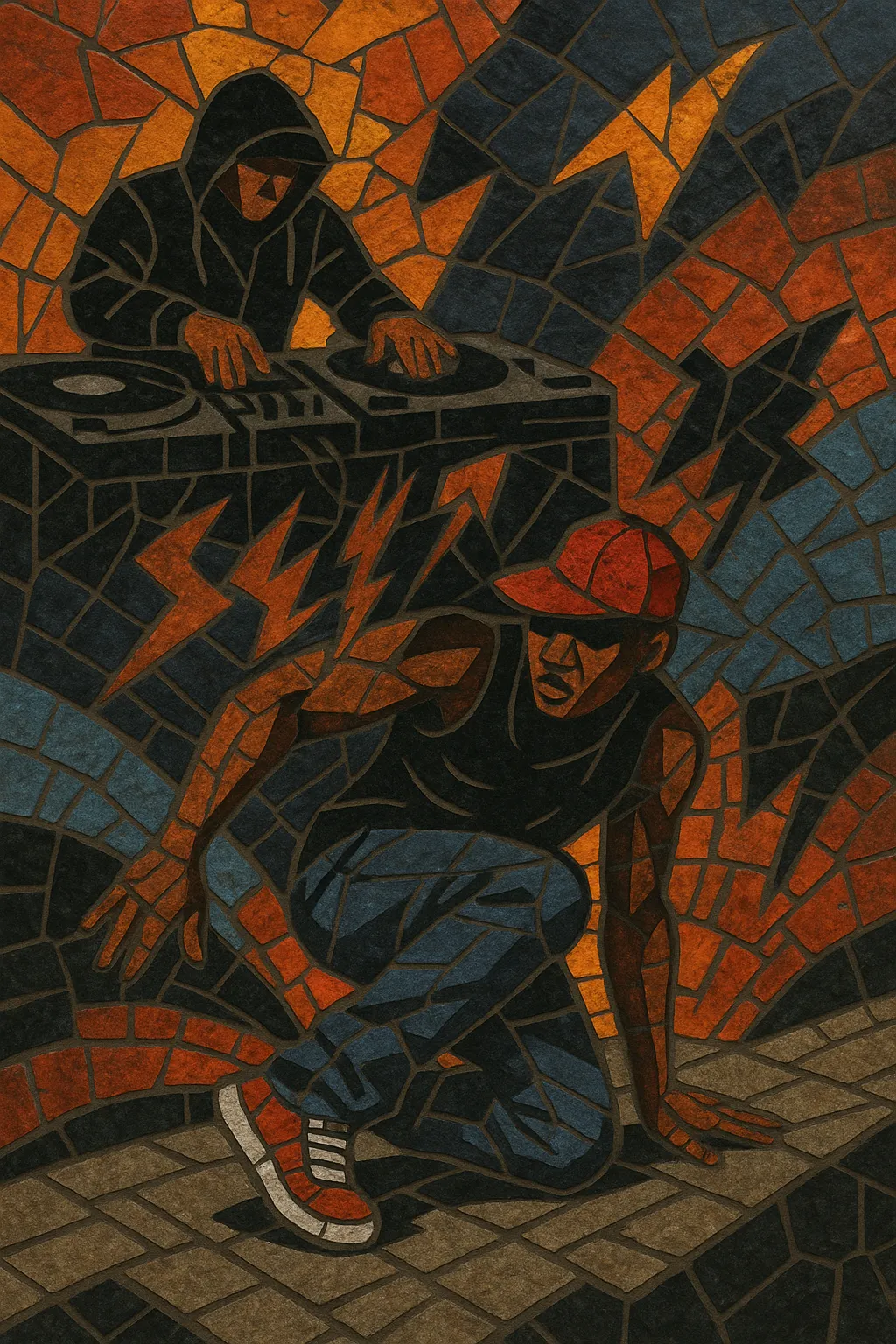Jersey club rap is a high-energy fusion of New Jersey’s jersey club dance sound with contemporary rap flows and song structures. It typically runs at 135–150 BPM, featuring the signature triplet kick patterns, chopped vocal chants, handclaps, and iconic “bed squeak” samples that define jersey club, while foregrounding punchy, hype-focused rap verses and hooks.
Where classic jersey club was largely DJ- and dancer-led, jersey club rap centers rappers and collaborative producer-rapper dynamics. The result is a party-ready style built for dance challenges, call-and-response crowd moments, and short-form virality, but it also carries forward the gritty, DIY spirit of Newark’s club scene.
Jersey club emerged in Newark, New Jersey in the mid-to-late 2000s as a local evolution of Baltimore club, with DJs like DJ Tameil, DJ Jayhood, DJ Sliink, and others shaping a faster, choppier sound for dancers. Even in this era, MC callouts and party chants occasionally appeared over club instrumentals, hinting at a rap-forward direction.
As social video platforms (Vine, then TikTok) elevated dance-centric music, rappers began adopting jersey club’s triplet kicks and chant-friendly breaks. Local New Jersey artists and producers (Bandmanrill, McVertt, DJ Smallz 732) crystallized a distinct jersey club rap format—tight verses, hooky chants, and explosive drops tailored for dance challenges.
The style broke wider through crossover hits and remixes: Coi Leray’s "Players" (DJ Smallz 732 Jersey Club Remix) and Lil Uzi Vert’s "Just Wanna Rock" (produced by McVertt & Synthetic) brought jersey club’s rhythmic DNA to radio, festivals, and global charts. Simultaneously, neighboring scenes (Philadelphia, New York) embraced the template, while New Jersey’s own wave kept innovating.
Jersey club rap solidified jersey club’s place in contemporary hip hop and pop culture. It catalyzed regional hybrids (e.g., jersey drill), informed mainstream pop/rap production choices, and re-centered dancers and crowd interaction in the structure of rap tracks.


